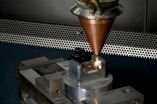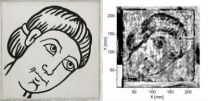(Press-News.org) Infants seem to develop at an astoundingly rapid pace, learning new things and acquiring new skills every day. And research suggests that the abilities that infants demonstrate early on can shape the development of skills later in life, in childhood and beyond.
Read about the latest research on infant development published in the November 2012 issue of Psychological Science, a journal of the Association for Psychological Science.
How Do You Learn to Walk? Thousands of Steps and Dozens of Falls per Day
How do babies learn to walk? In this study, psychological scientist Karen Adolph and colleagues at New York University recorded 15- to 60-minute videos of spontaneous activity from infants. They then coded the videos for the time infants spent walking and crawling, the number of crawling and walking steps infants took, and the number of falls infants experienced whether walking or crawling. The researchers found that the infants moved a tremendous amount and that new walkers moved faster than crawlers but had a similar number of falls at first and fewer as they became more experienced. This suggests that infants are motivated to begin walking because they move faster without falling more and that they dramatically improve their walking skills through immense amounts of practice.
Implications of Infant Cognition for Executive Functions at Age 11
Do basic information processing skills in infancy have any bearing on later executive functioning skills in children? Researchers Susan Rose of Albert Einstein College of medicine and colleagues assessed infants for memory, processing speed, and attention at age 7-12 months and age 24-36 months. When they were 11 years old, the children returned to the lab and were assessed for various different kinds of executive functioning skills, including working memory, inhibition, and shifting. Rose and colleagues created a statistical model that used infant abilities to predict executive functioning later in childhood and they found that this model fit the data well. The model indicated that processing speed in infancy significantly predicted working memory and shifting ability at age 11 and that memory in infancy significantly predicted shifting at age 11. This research supports the idea that infant cognitive abilities provide a foundation for the later development of executive functioning abilities.
One-Year-Old Infants Follow Others' Voice Direction
Can infants determine what adults are paying attention to by listening to their voices? Federico Rossano of the Max Planck Institute for Evolutionary Anthropology and colleagues conducted an experiment in which infants were placed in front of a wooden barrier that had a box sticking out of either side. A member of the research team hid behind the barrier and spoke in the direction of one of the boxes. The researchers then watched to see which box the infants moved toward. Rossano and colleagues found that infants moved toward the box that was in the direction of the researcher's vocalization. A follow-up study that examined the same task with chimpanzees found that they showed no ability to follow voice direction. This suggests that infants -- but perhaps not chimpanzees -- can infer what an adult is paying attention to based on voice alone.
###
Please contact Anna Mikulak at 202-293-9300 or amikulak@psychologicalscience.org for more information.
Brainy babies – Research explores infants' skills and abilities
2012-11-21
ELSE PRESS RELEASES FROM THIS DATE:
Short DNA strands in the genome may be key to understanding human cognition and diseases
2012-11-21
Short snippets of DNA found in human brain tissue provide new insight into human cognitive function and risk for developing certain neurological diseases, according to researchers from the Departments of Psychiatry and Neuroscience at Mount Sinai School of Medicine. The findings are published in the November 20th issue of PLoS Biology.
There are nearly 40 million positions in the human genome with DNA sequences that are different than those in non-human primates, making the task of learning which are important and which are inconsequential a challenge for scientists. ...
It takes two to tangle: Wistar scientists further unravel telomere biology
2012-11-21
Chromosomes - long, linear DNA molecules – are capped at their ends with special DNA structures called telomeres and an assortment of proteins, which together act as a protective sheath. Telomeres are maintained through the interactions between an enzyme, telomerase, and several accessory proteins. Researchers at The Wistar Institute have defined the structure of one of these critical proteins in yeast.
Understanding how telomeres keep chromosomes – and by extension, genomes – intact is an area of intense scientific focus in the fields of both aging and cancer. In aging, ...
Pathway identified in human lymphoma points way to new blood cancer treatments
2012-11-21
PHILADELPHIA – A pathway called the "Unfolded Protein Response," or UPR, a cell's way of responding to unfolded and misfolded proteins, helps tumor cells escape programmed cell death during the development of lymphoma.
Research, led by Lori Hart, Ph.D., research associate and Constantinos Koumenis, Ph.D., associate professor,and research division director in the Department of Radiation Oncology, both from the Perelman School of Medicine, University of Pennsylvania, and Davide Ruggero, Ph.D., associate professor, Department of Urology, University of California, San Francisco, ...
University of Tennessee study: Unexpected microbes fighting harmful greenhouse gas
2012-11-21
The environment has a more formidable opponent than carbon dioxide. Another greenhouse gas, nitrous oxide, is 300 times more potent and also destroys the ozone layer each time it is released into the atmosphere through agricultural practices, sewage treatment and fossil fuel combustion.
Luckily, nature has a larger army than previously thought combating this greenhouse gas—according to a study by Frank Loeffler, University of Tennessee, Knoxville–Oak Ridge National Laboratory Governor's Chair for Microbiology, and his colleagues.
The findings are published in the ...
Saving water without hurting peach production
2012-11-21
U.S. Department of Agriculture (USDA) scientists are helping peach growers make the most of dwindling water supplies in California's San Joaquin Valley.
Agricultural Research Service (ARS) scientist James E. Ayars at the San Joaquin Valley Agricultural Sciences Center in Parlier, Calif., has found a way to reduce the amount of water given post-harvest to early-season peaches so that the reduction has a minimal effect on yield and fruit quality. ARS is USDA's principal intramural scientific research agency, and the research supports the USDA priority of promoting international ...
Better protection for forging dies
2012-11-21
Forging dies must withstand a lot. They must be hard so that their surface does not get too worn out and is able to last through great changes in temperature and handle the impactful blows of the forge. However, the harder a material is, the more brittle it becomes - and forging dies are less able to handle the stress from the impact. For this reason, the manufacturers had to find a compromise between hardness and strength. One of the possibilities is to surround a semi-hard, strong material with a hard layer. The problem is that the layer rests on the softer material and ...
CDC and NIH survey provides first report of state-level COPD prevalence
2012-11-21
The age-adjusted prevalence of chronic obstructive pulmonary disease (COPD) varies considerably within the United States, from less than 4 percent of the population in Washington and Minnesota to more than 9 percent in Alabama and Kentucky. These state-level rates are among the COPD data available for the first time as part of the newly released 2011 Behavioral Risk Factor Surveillance System (BRFSS) survey.
"COPD is a tremendous public health burden and a leading cause of death. It is a health condition that needs to be urgently addressed, particularly on a local level," ...
Detective work using terahertz radiation
2012-11-21
It was a special moment for Michael Panzner of the Fraunhofer Institute for Material and Beam Technology IWS in Dresden, Germany and his partners: in the Dresden Hygiene Museum the scientists were examining a wall picture by Gerhard Richter that had been believed lost long ago. Shortly before leaving the German Democratic Republic the artist had left it behind as a journeyman's project. Then, in the 1960s, it was unceremoniously painted over. However, instead of being interested in the picture, Panzer was far more interested in the new detector which was being used for ...
Architecture of rod sensory cilium disrupted by mutation
2012-11-21
HOUSTON – (Nov. 22, 2012) – Using a new technique called cryo-electron tomography, two research teams at Baylor College of Medicine (www.bcm.edu) have created a three-dimensional map that gives a better understanding of how the architecture of the rod sensory cilium (part of one type of photoreceptor in the eye) is changed by genetic mutation and how that affects its ability to transport proteins as part of the light-sensing process.
Almost all mammalian cells have cilia. Some are motile and some are not. They play a central role in cellular operations, and when they ...
New evidence of dinosaurs' role in the evolution of bird flight
2012-11-21
Academics at the Universities of Bristol, Yale and Calgary have shown that prehistoric birds had a much more primitive version of the wings we see today, with rigid layers of feathers acting as simple airfoils for gliding.
Close examination of the earliest theropod dinosaurs suggests that feathers were initially developed for insulation, arranged in multiple layers to preserve heat, before their shape evolved for display and camouflage.
As evolution changed the configuration of the feathers, their important role in the aerodynamics and mechanics of flight became more ...


